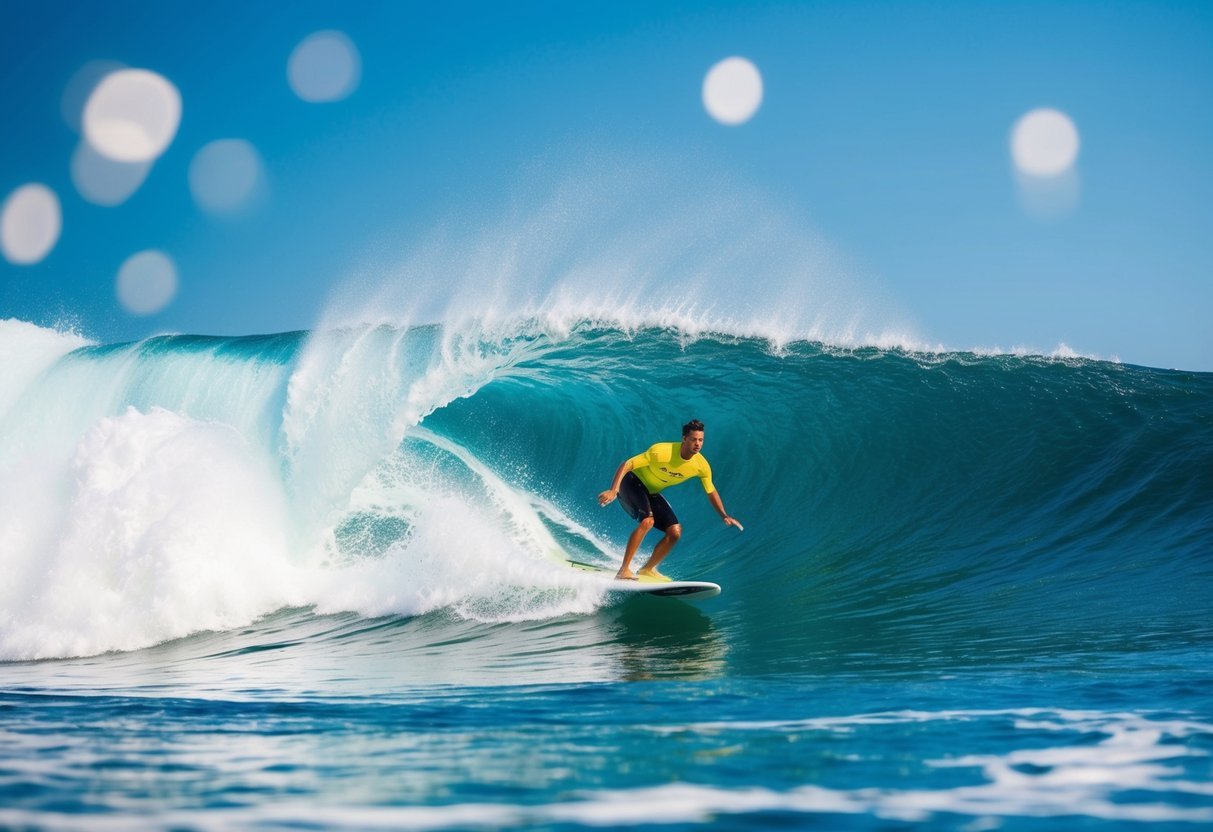Surfing is more than just a sport – it’s a way of life that connects you with nature and challenges your skills in thrilling ways.
From riding perfect barrels to carving up clean faces, the world’s best surf spots offer experiences you’ll never forget.
Discovering the planet’s premier waves can elevate your surfing to new heights and create lifelong memories.
Whether you’re a seasoned pro or an eager beginner, these seven world-class surfing destinations will get your adrenaline pumping and leave you longing for more time in the water.
Get ready to pack your board and chase the ultimate ride at these epic locations.
1) Banzai Pipeline, Hawaii
Banzai Pipeline, or simply “Pipeline,” is a legendary surf spot that’ll test your mettle.
Located on the North Shore of Oahu, it’s known for its powerful waves and thick barrels.
You’ll find Pipeline at Ehukai Beach Park, where it serves up some of the most challenging and spectacular waves on the planet.
The break is famous for its perfect barreling waves that attract pro surfers from all corners of the globe.
If you’re planning to tackle Pipeline, be prepared for a serious challenge.
This wave is not for the faint-hearted or inexperienced.
The shallow reef and intense power of the waves demand respect and skill.
During winter months, Pipeline hosts several major surf competitions.
The Billabong Pipe Masters and Da Hui Backdoor Shootout are just a couple of the high-profile events that showcase the world’s best surfers.
Even if you’re not ready to paddle out, watching the pros take on Pipeline is a thrilling experience.
The beach offers a perfect vantage point to witness some of the most impressive surfing action you’ll ever see.
2) Supertubes, South Africa
Ready to catch some of the best waves on the planet? Head to Supertubes in Jeffreys Bay, South Africa.
This world-class surf spot is home to the WSL Corona Open and boasts one of the most incredible right-handers you’ll ever ride.
Supertubes really shines when the waves are between 4-8 feet.
When it’s firing, you can expect lightning-fast rides, towering walls, and tube sections that seem to go on forever.
But be warned: this spot isn’t for the faint of heart. Supertubes is best suited for advanced surfers.
If you’ve got the skills, though, you’re in for the ride of your life.
Getting there is a breeze. The nearest airport is Port Elizabeth (PLZ), which offers both domestic and international flights.
From there, it’s just a short trip to Jeffreys Bay.
Remember to pack your wetsuit – the water can be chilly.
And don’t forget to respect the locals and follow surf etiquette.
With the right attitude and skills, you’ll have an unforgettable surfing experience at Supertubes.
3) Teahupo’o, Tahiti
If you’re looking for the ultimate surfing challenge, Teahupo’o in Tahiti is the place to be.
This legendary wave is known for its incredible power and massive size, making it a favorite among pro surfers and thrill-seekers alike.
Located on the southwestern coast of Tahiti, Teahupo’o offers some of the heaviest and most famous waves in the world.
The reef break here creates a unique wave shape that’s both awe-inspiring and terrifying.
During big swells, waves at Teahupo’o can reach over 20 feet high.
When conditions get really extreme, the Tahitian government may even issue a “Code Red” warning, banning all watercraft from the area.
The best time to surf Teahupo’o is from May to October, during Tahiti’s dry season.
This is when you’ll find the most consistent swells and favorable conditions.
Remember, Teahupo’o is not for the faint of heart.
If you’re an experienced surfer looking for the ride of your life, this is your spot.
But if you’re a beginner, it’s best to admire this wave from the safety of the shore or a boat.
4) Uluwatu, Bali
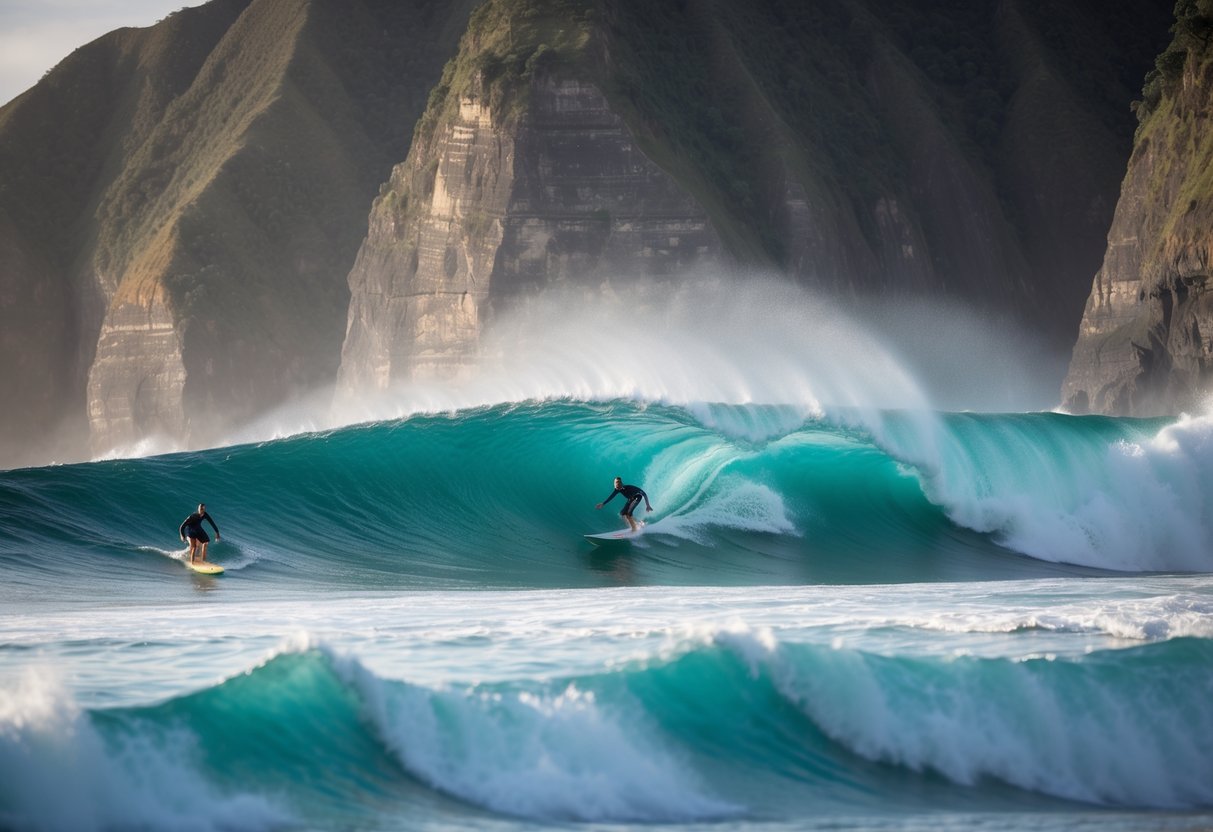
Get ready to experience some of the best waves on the planet at Uluwatu, Bali.
This world-famous surf spot sits on the southern tip of the island, offering up consistently epic swells.
You’ll find five distinct breaks here, each with its own character.
The waves are typically fast and powerful, perfect for thrill-seekers looking to push their limits.
As you paddle out, you’ll be surrounded by dramatic steep cliffs, adding to the adrenaline rush. Uluwatu’s waves work on different tides, so there’s almost always something rideable.
Keep in mind that this is an advanced spot.
If you’re a goofy-footer, you’re in luck – Uluwatu is known for its epic left-handers.
When you’re not in the water, soak up the stunning scenery.
The area is home to the famous Uluwatu Temple and beautiful white-sand beaches.
Don’t forget to check the surf forecast before you go.
The best swells usually hit between April and October, but you can find decent waves year-round.
5) Jeffreys Bay, South Africa
Grab your board and head to Jeffreys Bay, a surfer’s paradise on South Africa’s Eastern Cape.
This legendary spot is home to some of the world’s best right-hand point breaks.
J-Bay, as it’s affectionately known, offers consistently world-class waves that will challenge and thrill you.
The crown jewel is Supertubes, a wave that can deliver an incredible 1,200-yard ride when conditions are right.
But don’t worry if you’re not ready for Supertubes yet.
J-Bay has plenty of spots for all skill levels. Kitchen Windows offers mellower waves perfect for beginners and intermediates.
The best time to surf here is during the Southern Hemisphere winter, from May to September.
That’s when the swells are most consistent and the winds are favorable.
When you’re not in the water, you can soak up the laid-back vibe of this charming coastal town.
Enjoy fresh seafood, explore nearby nature reserves, or simply chill on the beach and watch the pros carve up the waves.
6) Gold Coast, Australia
Ready to catch some of the best waves Down Under? The Gold Coast in Australia is a surfer’s paradise that’ll make you want to grab your board and hit the water ASAP.
Snapper Rocks is the crown jewel of Gold Coast surf spots.
This right-hand point break dishes out long, peeling waves that’ll have you grinning from ear to ear.
It’s no wonder pro surfers flock here for annual competitions.
If you’re looking for variety, head to Burleigh Heads.
This spot offers both punchy beach breaks and a world-class point break, perfect for surfers of all skill levels.
For those who like a challenge, Duranbah Beach (aka D-bah) is your go-to.
This powerful beach break serves up hollow waves that’ll test your skills and give you an adrenaline rush.
The best part? The Gold Coast offers great waves year-round.
But if you want to catch the cream of the crop, plan your trip between February and April when cyclone swells roll in.
So wax up your board and get ready for an unforgettable surfing adventure on the Gold Coast.
With its consistent waves and stunning beaches, you’ll be stoked you made the trip.
7) Trestles, California
Trestles is a surfer’s paradise tucked away in Southern California.
You’ll find this gem just south of San Clemente, offering some of the best waves on the West Coast.
The beach is home to five distinct surf breaks: Cotton, Uppers, Middles, Lowers, and Church.
Each offers a unique surfing experience, catering to different skill levels.
Lower Trestles is the crown jewel of this surf spot.
It’s known for its consistent waves and long rides, making it a favorite among pros and amateurs alike.
You’ll need to work for your waves at Trestles.
There’s no car access, so prepare for a short hike to reach the beach.
But trust us, it’s worth the effort.
Summer is prime time for surfing Trestles.
The waves are at their best, and you might even catch a glimpse of pro surfers practicing for the annual WSL surf finals held here in September.
Whether you’re a seasoned pro or a beginner looking to catch your first wave, Trestles has something for everyone.
Just remember to respect the local surf culture and keep the beach clean.
Understanding Wave Types
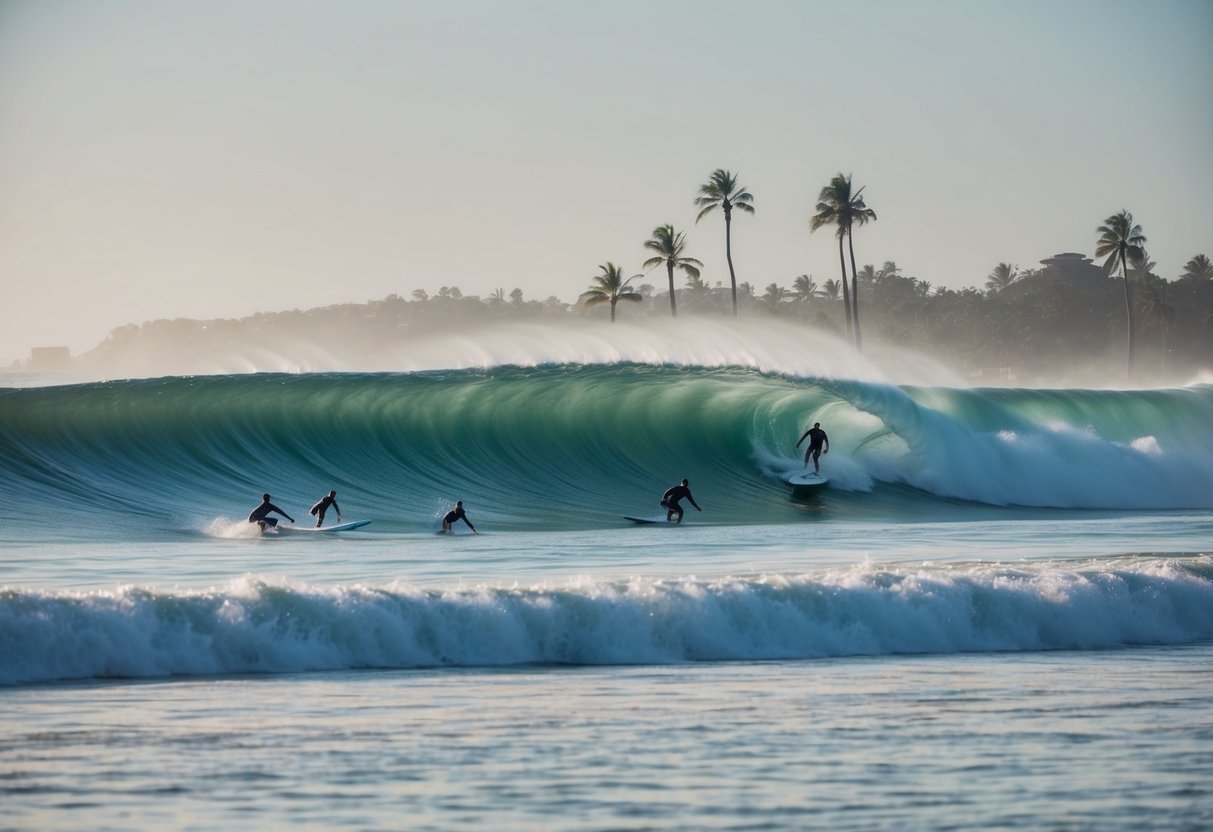
Waves come in different shapes and sizes, each offering a unique surfing experience.
The type of break you encounter will greatly impact your ride and the techniques you’ll need to master.
Beach Breaks
Beach breaks occur where waves crash directly onto a sandy bottom.
These spots are often great for beginners and experienced surfers alike.
You’ll find beach breaks all over the world, from California to Australia.
The constantly shifting sandbars create a variety of wave shapes and sizes.
This means you can often find a suitable wave regardless of your skill level.
Beach breaks tend to be more forgiving if you wipe out, as there’s usually soft sand beneath you rather than hard reef or rocks.
Point Breaks
Point breaks form when waves wrap around a point of land or a headland.
The takeoff zone is often concentrated in one spot, which can lead to crowding.
Once you’re up and riding, point breaks can provide a thrilling experience.
The wave face tends to be more predictable, allowing for some serious carving and even barrel riding in the right conditions.
Reef Breaks
Reef breaks occur when waves break over a coral reef or rocky sea floor.
These spots often produce some of the most challenging and high-quality waves in the world.
You’ll need to be extra cautious at reef breaks.
The shallow, hard bottom can be dangerous if you fall.
But the payoff can be huge.
Reef breaks often create perfectly shaped waves that hold up well even in larger swells.
Many iconic surf spots, like Pipeline in Hawaii or Teahupo’o in Tahiti, are reef breaks.
These waves aren’t for the faint of heart, but they offer some of the most exhilarating rides you can experience.
Surf Culture
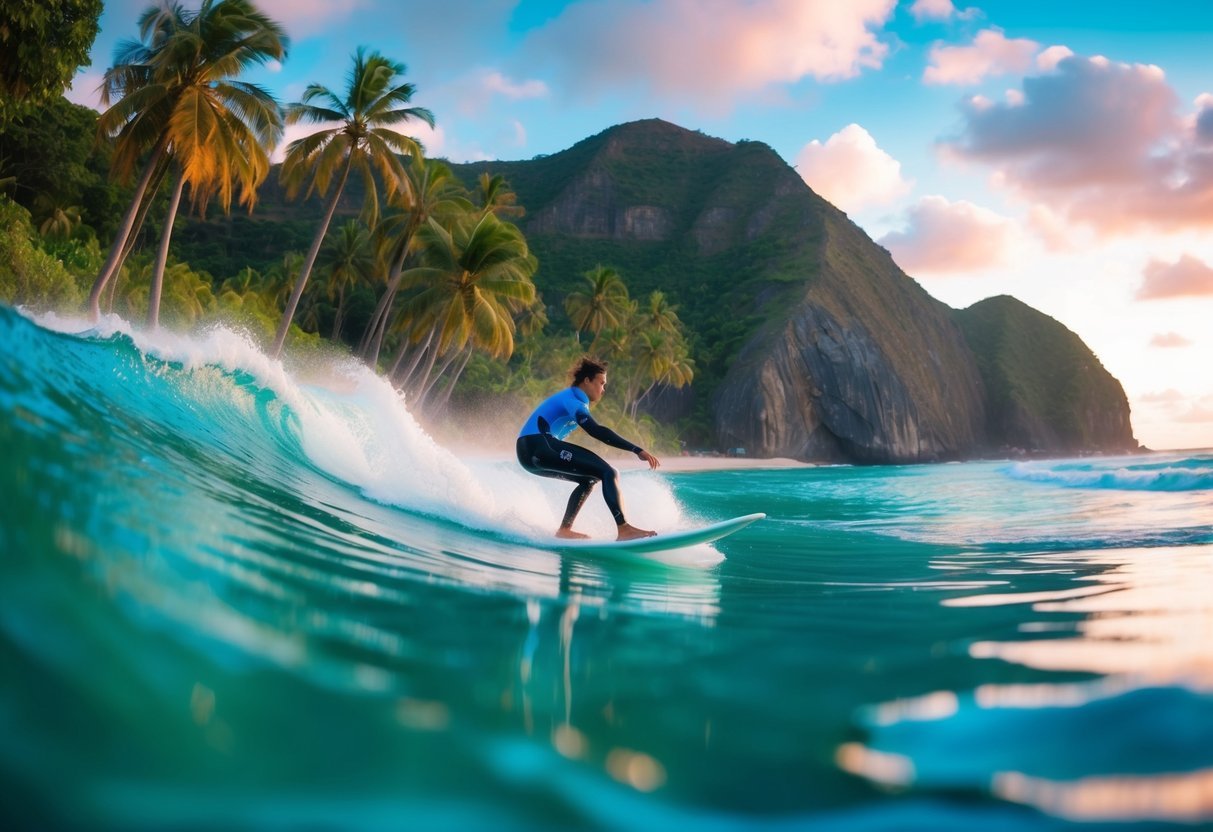
Surf culture encompasses a rich history, environmental stewardship, and global communities united by a love for riding waves.
It’s more than just a sport – it’s a lifestyle that has shaped coastal regions worldwide.
History and Evolution
Surfing’s roots trace back to ancient Polynesian cultures, where it held spiritual significance.
In Hawaii, surfing was an integral part of daily life and social structure.
The sport spread globally in the 20th century, gaining popularity in California and Australia.
The 1960s saw a surf boom, with movies and music celebrating the carefree beach lifestyle.
Surfboards evolved from heavy wooden planks to lightweight, maneuverable designs.
Today, you’ll find a variety of board shapes tailored to different wave types and riding styles.
Modern surf culture blends tradition with innovation.
Pro surfing competitions like the World Surf League attract top athletes and showcase incredible skills on massive waves.
Environmental Awareness
As surfers, you’re on the front lines of ocean conservation.
Many surf communities actively participate in beach cleanups and marine protection efforts.
You’ll often see surfers advocating for cleaner oceans and sustainable coastal development.
Climate change impacts surf spots directly through rising sea levels and changing wave patterns.
This has led to increased environmental consciousness within the surf community.
Many surf brands now use eco-friendly materials and manufacturing processes.
Surf-related tourism can both benefit and strain local ecosystems.
Responsible surf travel involves respecting local communities and minimizing your environmental impact.
Global Surf Communities
Surfing has created tight-knit communities around the world.
From Taghazout in Morocco to the Gold Coast in Australia, you’ll find welcoming surf scenes with their own unique flavors.
Surf schools and camps have made the sport more accessible than ever.
You can learn to surf in tropical paradises like Bali or Costa Rica, or catch waves closer to home at your local beach.
Online forums and social media connect surfers globally, sharing tips on swell forecasts, gear, and travel destinations.
This digital community complements the real-world camaraderie you’ll experience in surf lineups.
Local surf shops often serve as community hubs, hosting events and fostering connections among wave riders of all levels.
Frequently Asked Questions
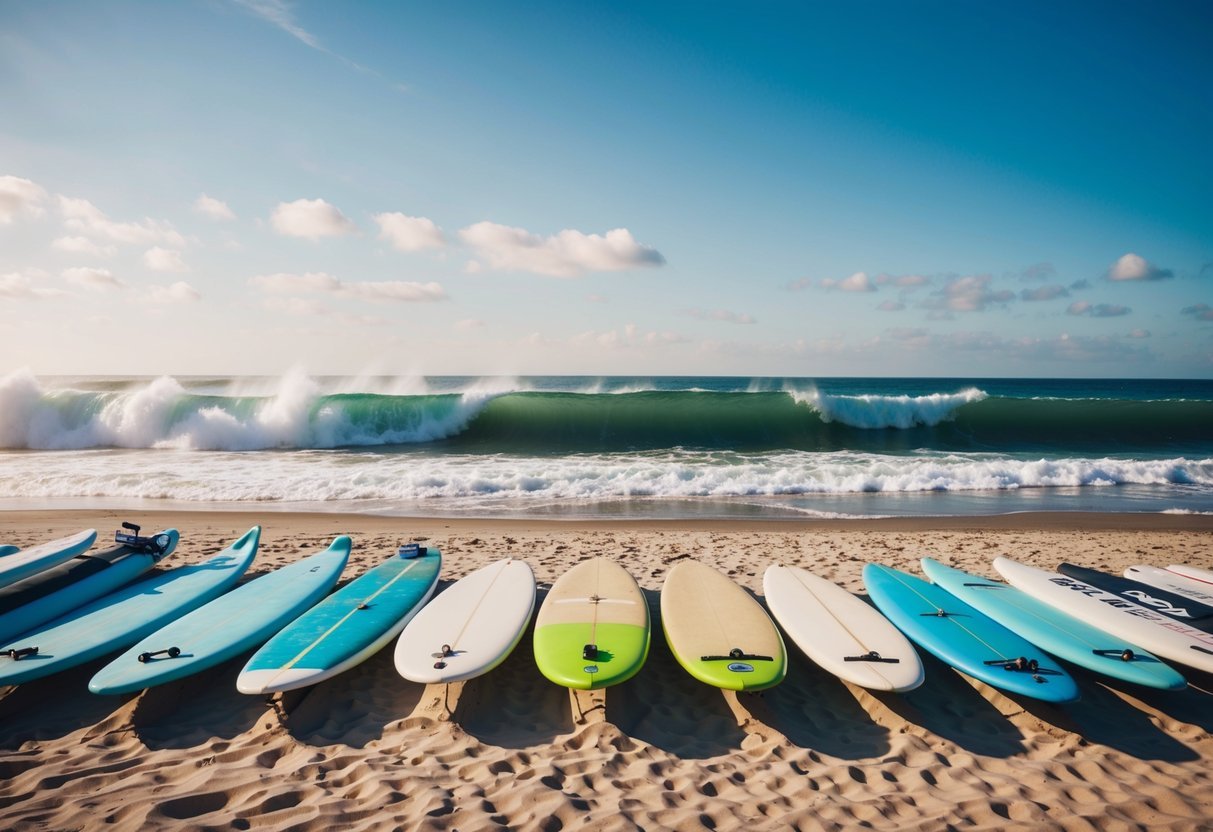
Surfing enthusiasts of all levels have burning questions about the world’s top spots.
From beginner-friendly beaches to year-round waves, there’s a lot to discover about this thrilling sport.
Which top surf spots should beginners check out?
If you’re new to surfing, you’ll want to start with gentler waves. Playa Maderas in Nicaragua is perfect for beginners, offering consistent waves and a laid-back vibe.
Byron Bay in Australia is another great option, with its long, rolling waves and plenty of surf schools.
What are some iconic surf locations worldwide?
Some of the most legendary surf spots include Banzai Pipeline in Hawaii, known for its powerful waves and hollow barrels.
Supertubes in South Africa offers incredible right-hand waves that draw surfers from around the globe.
Teahupo’o in Tahiti is famous for its heavy, thunderous waves that challenge even the pros.
Where can you surf throughout the entire year?
For year-round surfing, head to Bali, Indonesia. Uluwatu offers consistent waves and warm water temperatures all year.
Costa Rica is another great option, with its Pacific coast providing reliable waves regardless of the season.
Which country is considered the surf capital of the world?
Australia is often dubbed the surf capital of the world.
With its vast coastline and diverse wave types, it’s a surfer’s paradise.
From the Gold Coast to Margaret River, you’ll find world-class breaks and a deeply ingrained surf culture.
What nations are known for producing the best surfers?
The United States, particularly Hawaii, has produced many legendary surfers.
Australia, Brazil, and South Africa are also known for their top-tier surfing talent.
These countries have a rich surfing heritage and ideal conditions for developing skills.
Are there any world-renowned surf spots in the US?
Absolutely! Rincon in California is considered one of the best point breaks in the country.
The North Shore of Oahu, Hawaii, is home to several iconic spots like Pipeline and Waimea Bay.
Mavericks in Northern California is famous for its massive waves, attracting big wave surfers from around the world.


